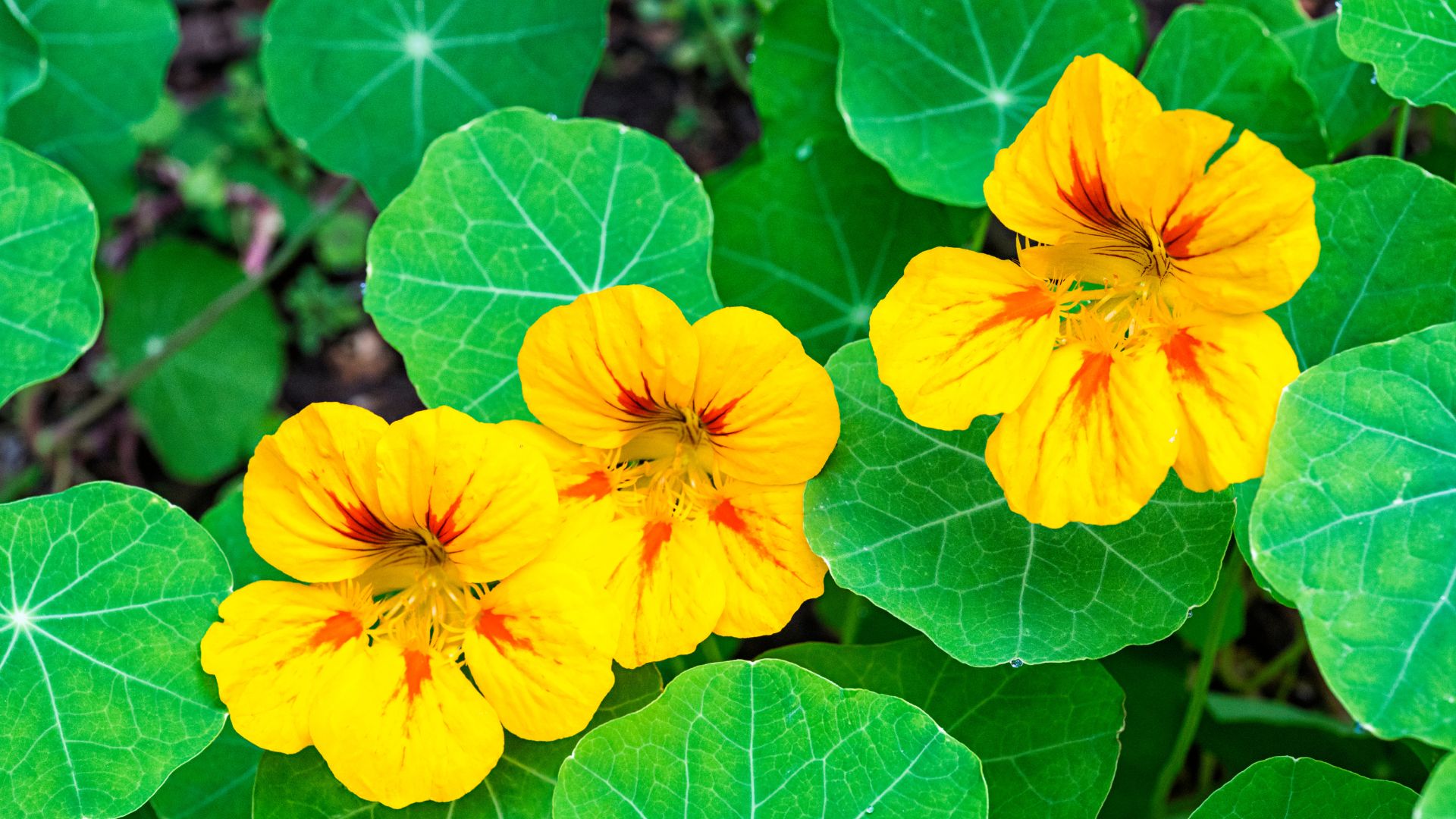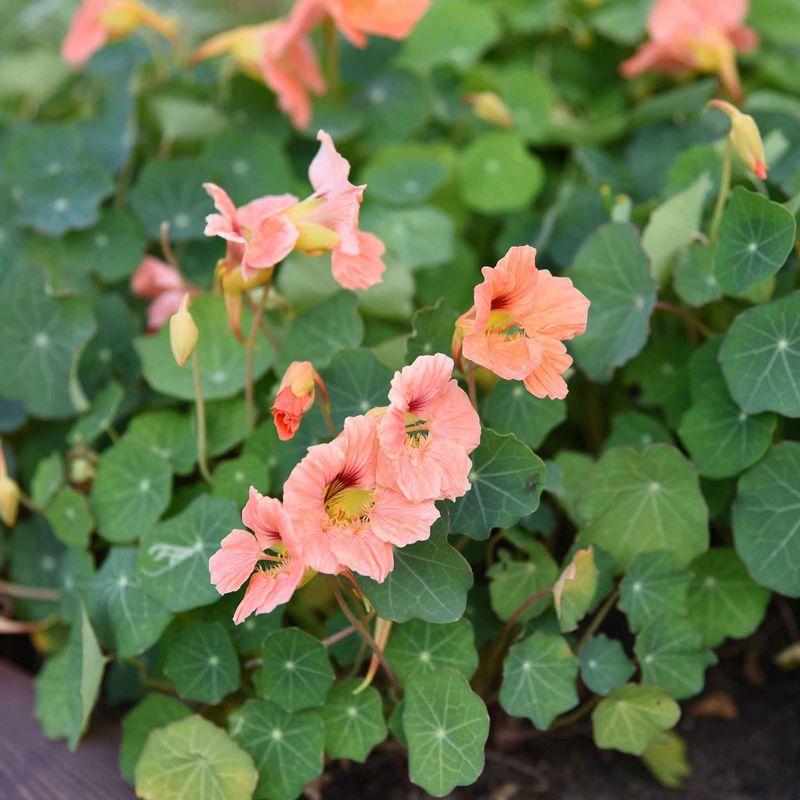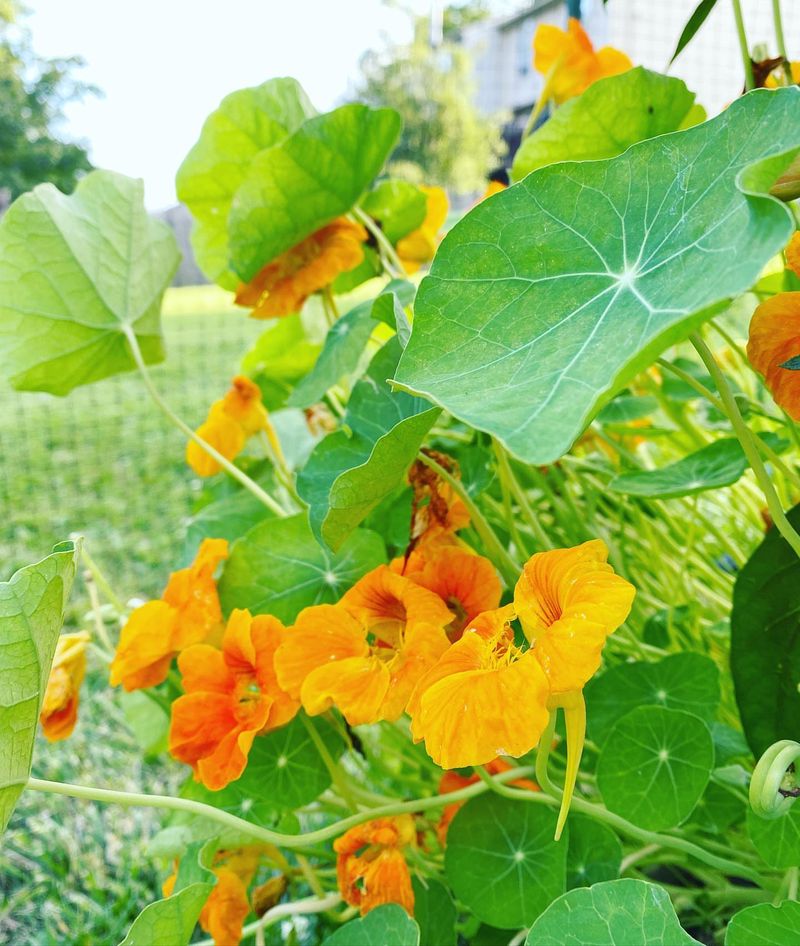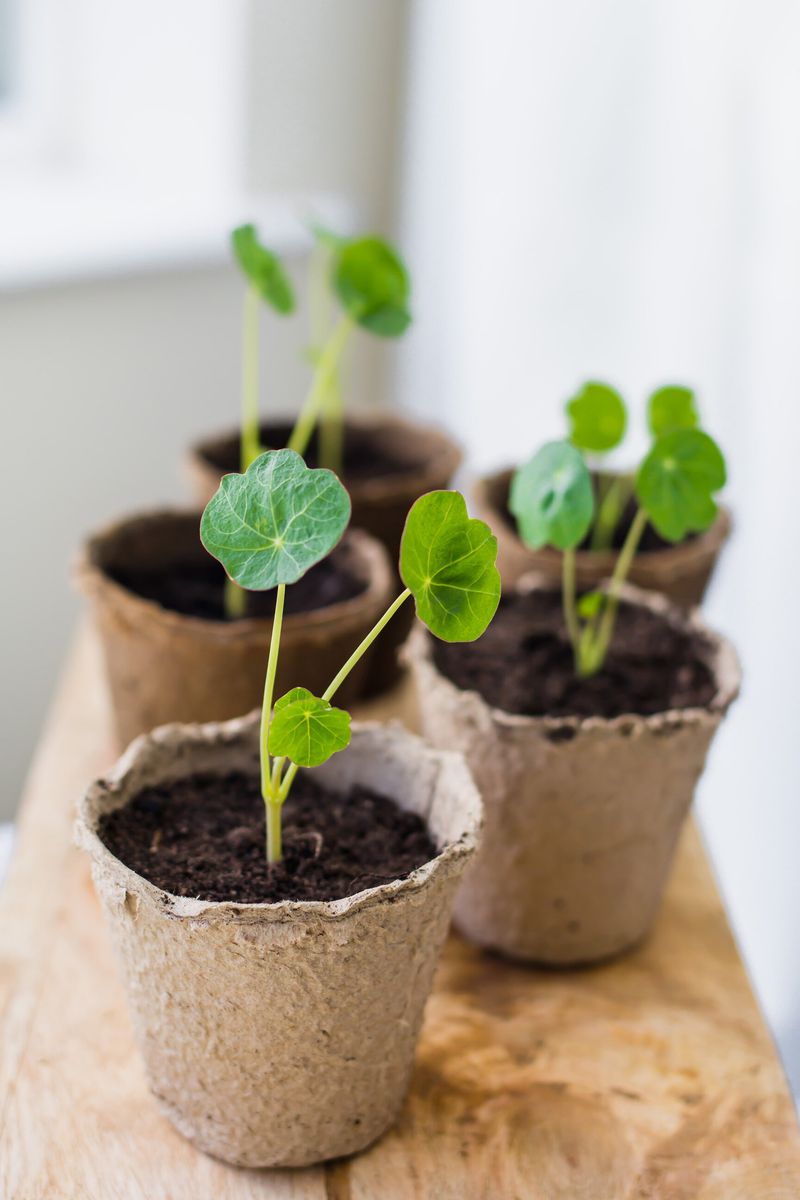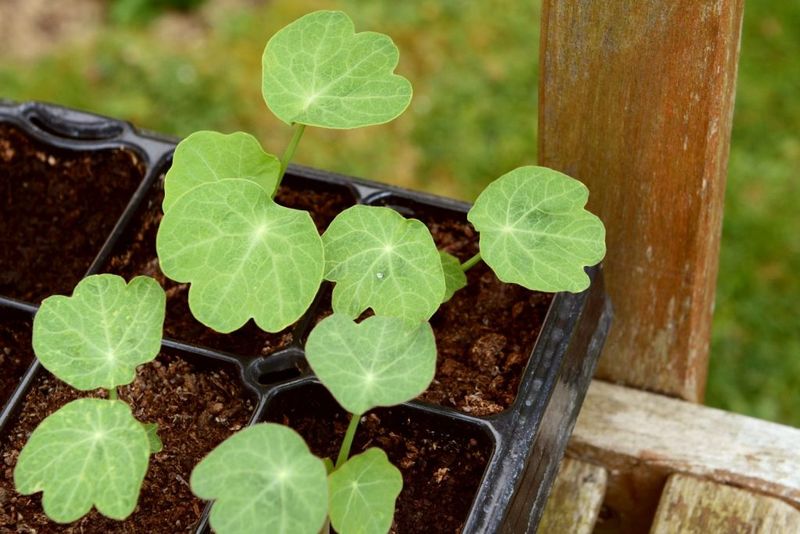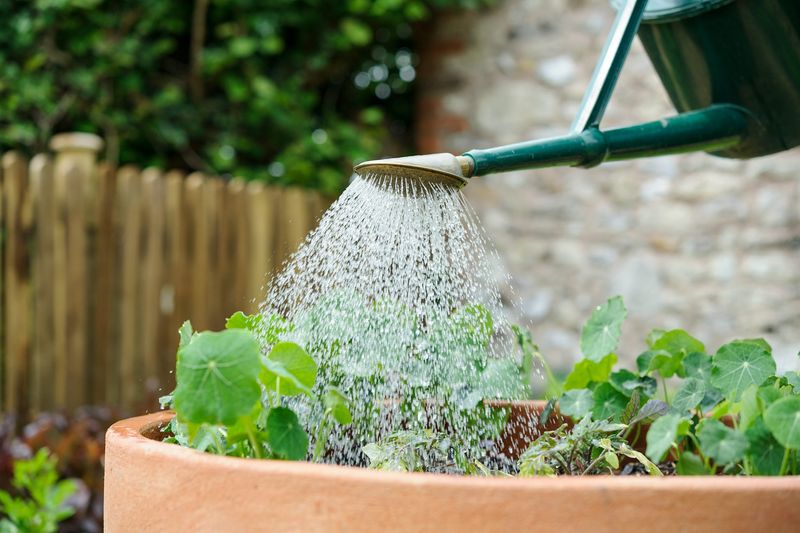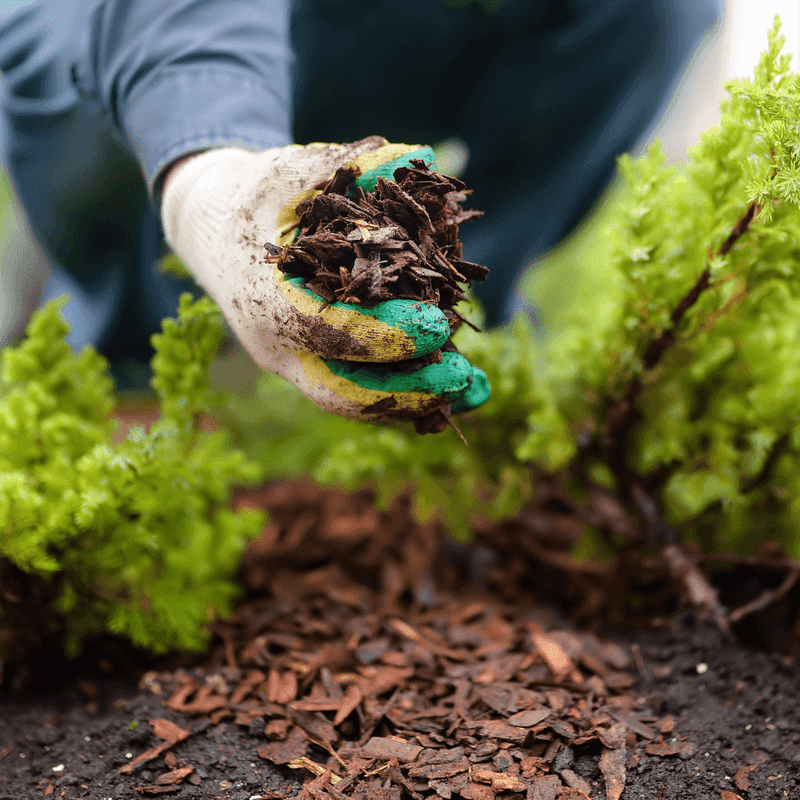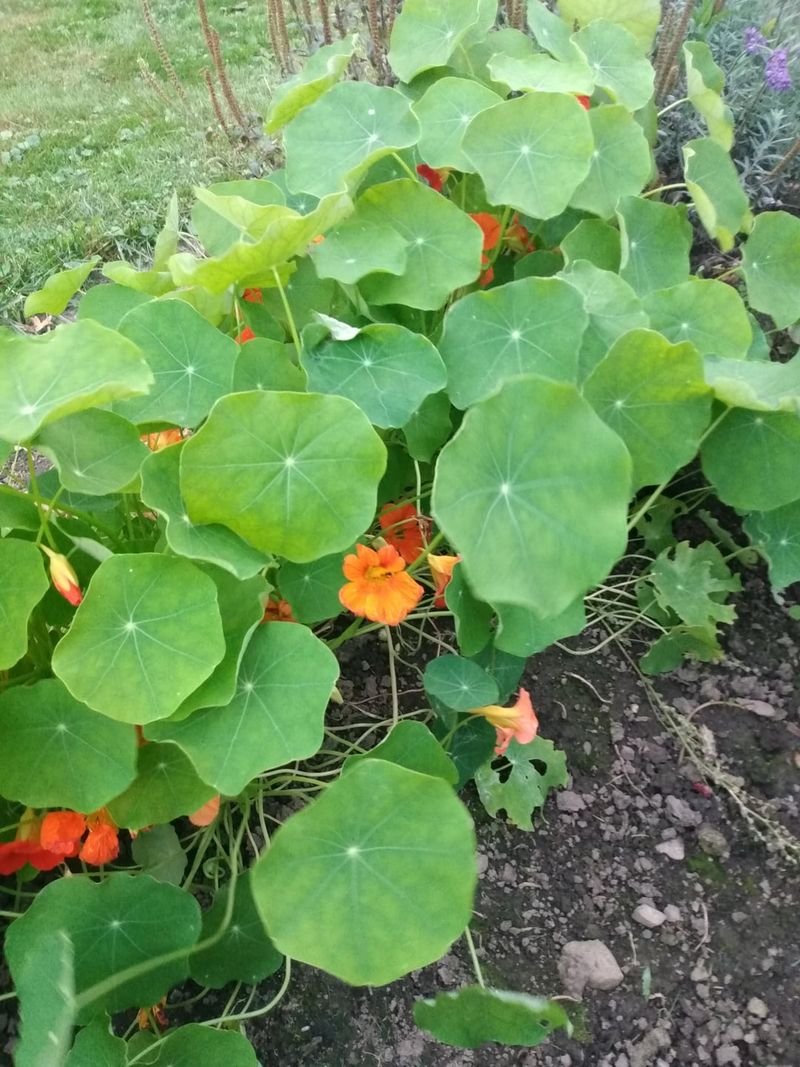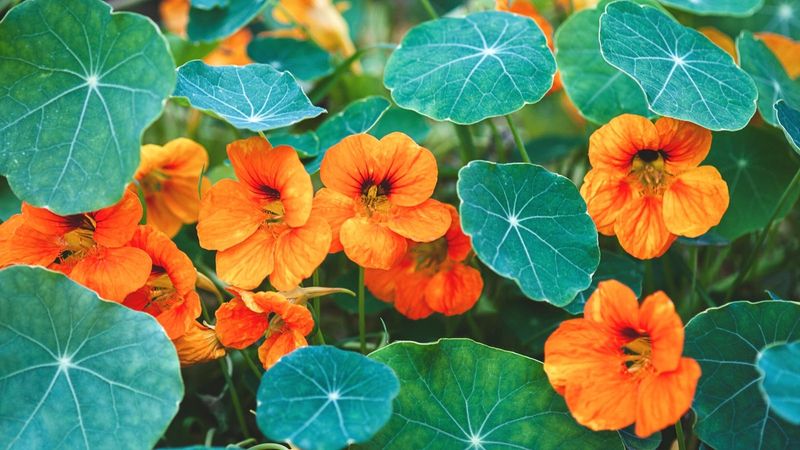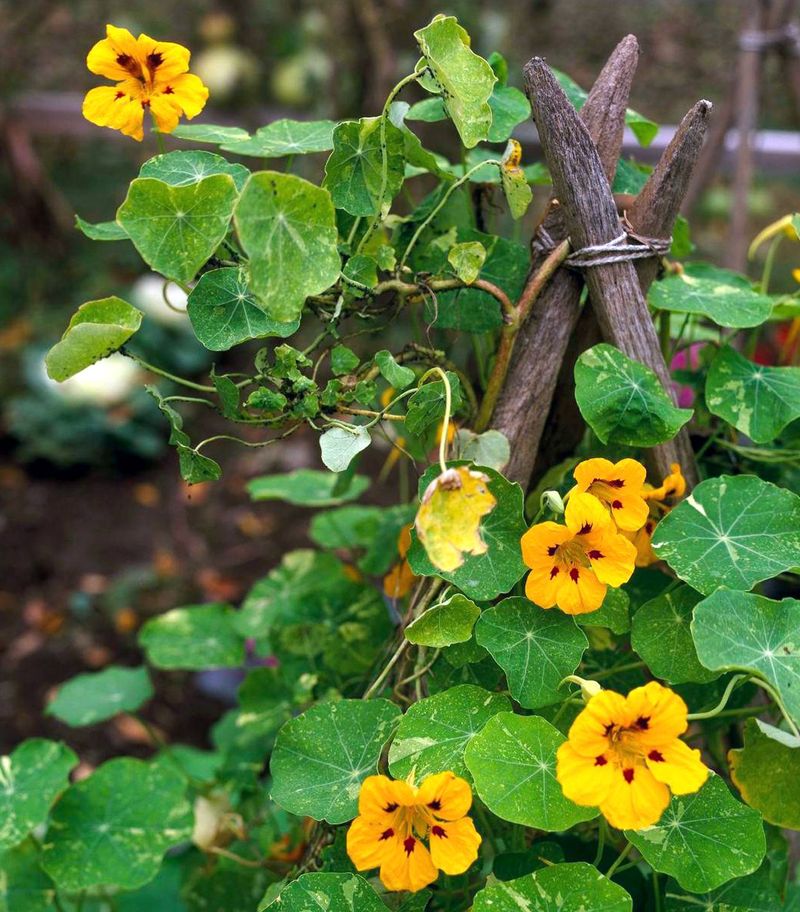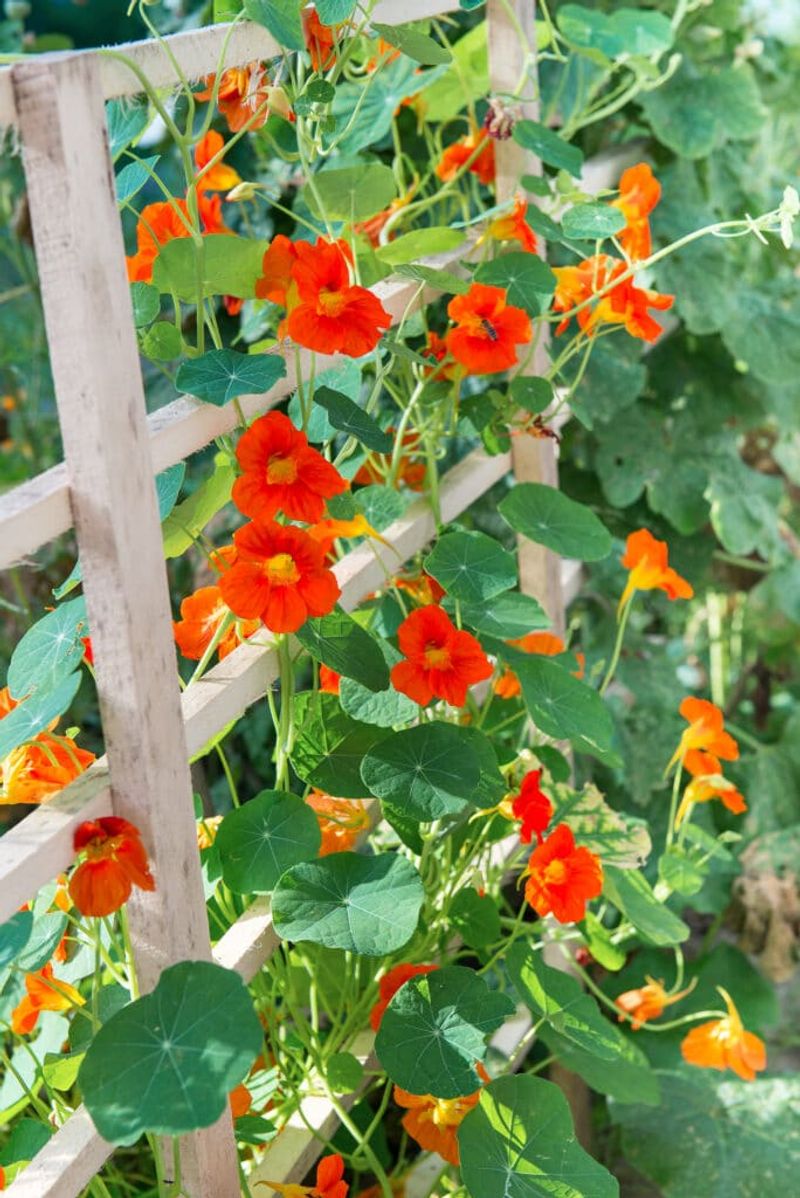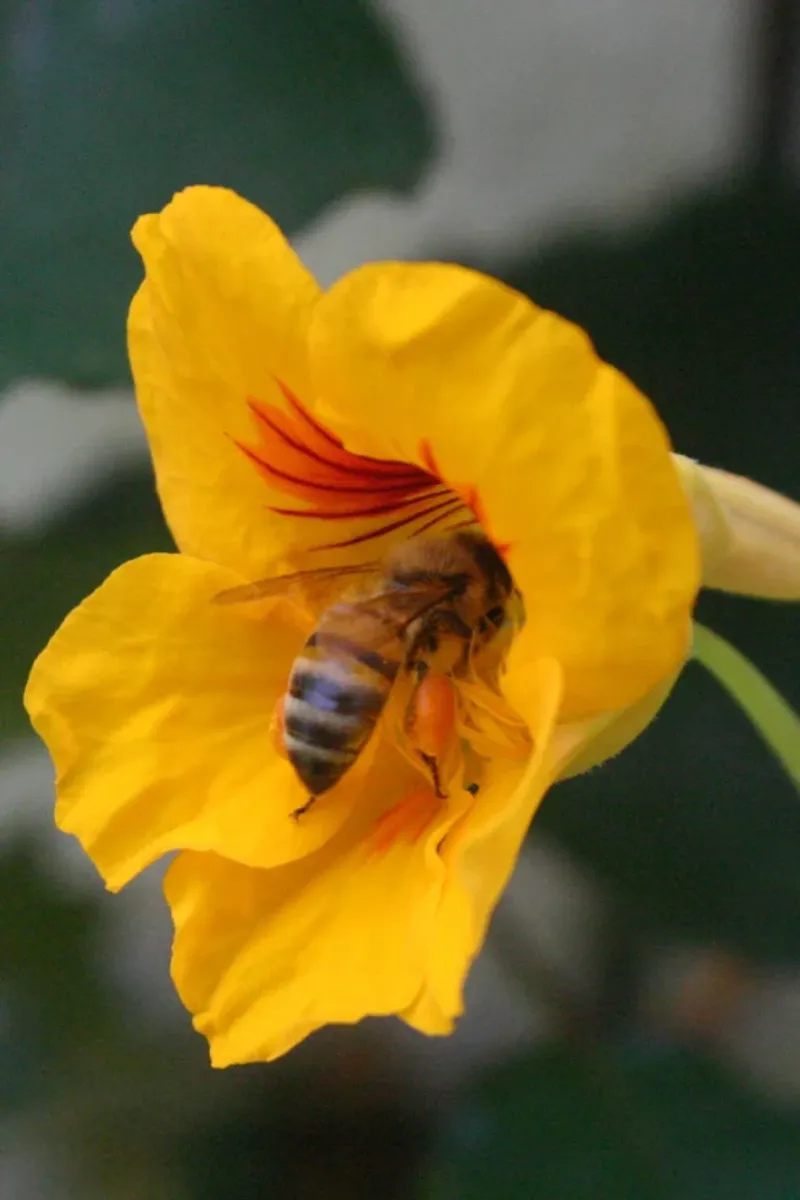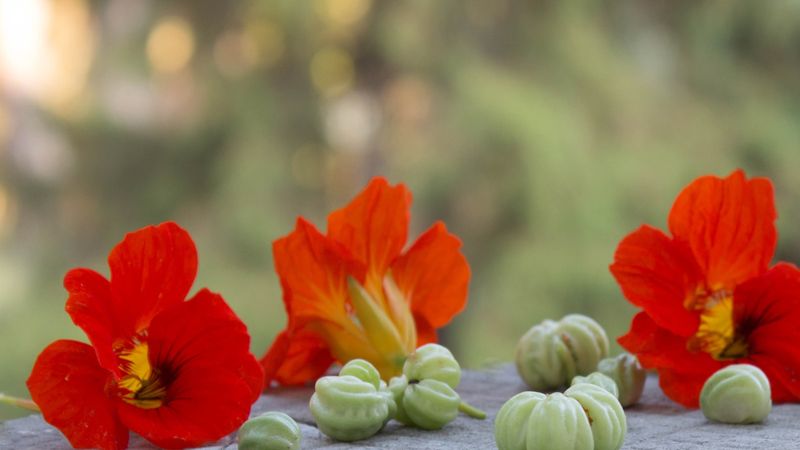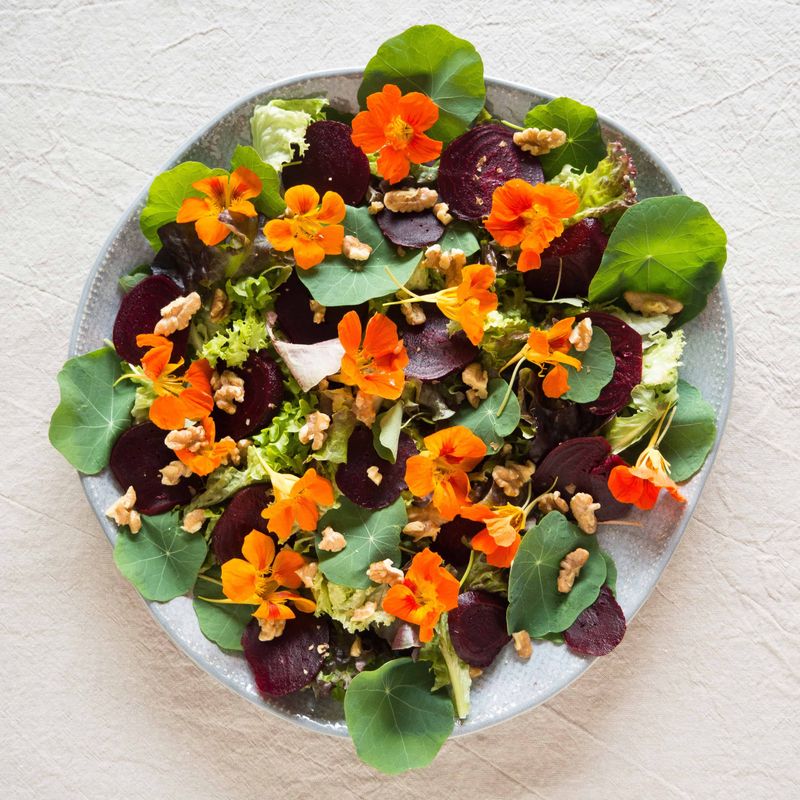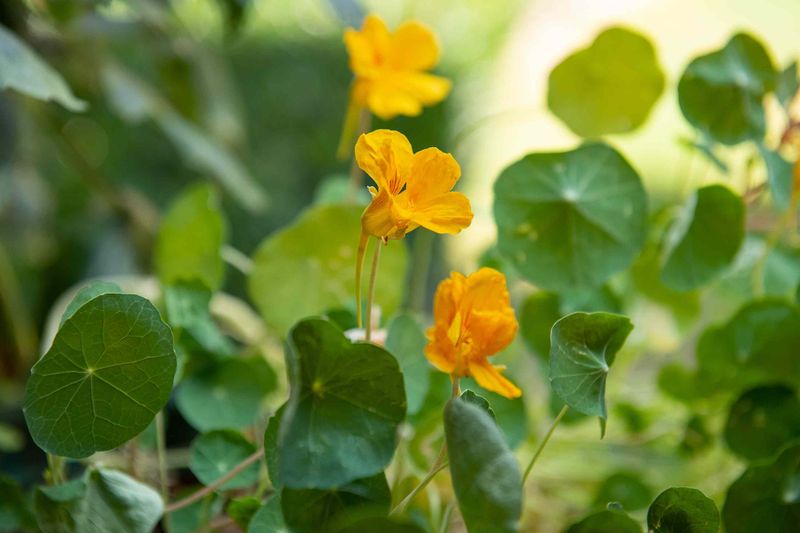Growing nasturtiums has been one of those unexpectedly joyful experiences in my garden. I still remember the first time I planted them—half expecting nothing to happen—and then, boom!
What’s even better? They’re not just pretty faces. Nasturtiums are edible, super easy to grow, and they make fantastic companion plants. It’s a win-win. If you’re thinking about giving them a try, you’re in for a treat.
I’ll walk you through some simple and practical steps I wish I had known when I first started. Nasturtiums are bound to become one of your favorites too.
1. Selecting The Right Seeds
Choosing the right seeds is the first step. Opt for seeds from reputable suppliers to ensure high germination rates. Look for different varieties, as each offers unique color palettes and growth habits. Mixing them can create a stunning garden display!
One common mistake is buying old seeds. Check the packaging date before purchasing. Fresh seeds have better viability and will increase your chances of successful germination. Store them in a cool, dry place until you’re ready to plant.
Consider heirloom varieties if you want to preserve traditional strains. These often have unique flavors and colors, making your garden even more special.
2. Preparing The Soil
Preparing the soil is crucial for healthy growth. Nasturtiums thrive in well-drained, moderately fertile soil. Too rich in nutrients, and you’ll get more leaves than flowers. Aim for a balance that encourages blooms!
Avoid compacted soil as it restricts root growth. Loosen the soil with a garden fork, removing any stones or debris. This helps roots to spread, giving your plants the best start.
Incorporate organic matter like compost to improve soil structure. This not only enhances fertility but also aids moisture retention, crucial for new seedlings. Remember, soil preparation sets the foundation for your plants’ success.
3. Sowing Seeds Indoors
Starting seeds indoors can give you a head start. Plant them 4 to 6 weeks before the last frost date. Use small pots with drainage holes filled with seed-starting mix to ensure proper germination conditions.
Try to avoid overcrowding the seeds in pots. Place one or two seeds per container, covering them lightly with soil. Water gently to avoid disturbing the placement of the seeds.
Keep them on a sunny windowsill where they can get ample light. Too much shade can lead to leggy seedlings. With the right conditions, your seeds will sprout into healthy young plants ready for the garden.
4. Transplanting Seedlings
Once the danger of frost has passed, it’s time to transplant your seedlings outdoors. Harden them off by gradually acclimatizing them to outdoor conditions over a week.
Don’t transplant on windy days. Gentle conditions reduce transplant shock, allowing roots to establish quickly. Space seedlings 10 to 12 inches apart to prevent overcrowding and ensure healthy growth.
Dig a hole deep enough to cover the root ball. Water the seedlings well before and after planting. This ensures they settle in, and roots start absorbing nutrients immediately, setting the stage for vigorous growth.
5. Watering Wisely
Proper watering is key to thriving nasturtiums. They prefer consistent moisture but dislike being waterlogged. Aim to water deeply once a week, soaking the soil to encourage root growth.
Overwatering can lead to root rot. Let the top inch of soil dry out between waterings, especially in cooler months. Adjust your watering schedule based on weather conditions and plant needs.
Using a watering can with a fine rose helps deliver water gently, avoiding soil erosion and damage to delicate seedlings. A little care goes a long way in keeping your plants healthy and happy.
6. Providing Adequate Sunlight
Sunlight is essential for nasturtiums to flourish. They need at least 6 hours of direct sunlight daily. Choose a sunny spot in your garden to plant them, ensuring they receive enough light.
Shaded areas can stunt growth and reduce flowering. If your garden is partially shaded, consider using reflective surfaces to increase light exposure.
In very hot climates, providing some afternoon shade can prevent wilting. Balance is key—too much sun can cause stress, so monitor your plants and adjust their environment as needed for optimal growth.
7. Mulching for Moisture
Mulching helps retain soil moisture and suppress weeds, crucial for nasturtiums’ health. Use organic mulch like straw or wood chips around the base of your plants.
Avoid piling mulch against stems as this can promote rot. Spread it evenly to a depth of 2 to 3 inches, allowing air circulation around the plant. This keeps the soil cool and conserves water.
Regularly check the mulch and replenish it as needed, especially after heavy rains. By maintaining a consistent mulch layer, you create an environment where nasturtiums can thrive with minimal intervention.
8. Feeding With Care
Nasturtiums are not heavy feeders but benefit from occasional feeding. Use a balanced organic fertilizer every few weeks to promote flowering without encouraging excessive leaf growth.
High-nitrogen fertilizers can lead to foliage but fewer flowers. Pick a formula that supports blooms instead, enhancing the beauty of your garden.
Feeding is most beneficial during the growing season. Apply it carefully to the soil, avoiding contact with leaves to prevent burn. With the right nutrition, nasturtiums will reward you with a beautiful display.
9. Controlling Pests And Diseases
Nasturtiums are generally pest-resistant but can attract aphids and caterpillars. Regularly check leaves for signs of infestation, especially during warm months.
Use natural remedies like neem oil or insecticidal soap, which can effectively manage pests without harming beneficial insects.
Diseases are rare, but fungal issues can occur in humid conditions. Ensure good air circulation around plants and avoid overhead watering to minimize risk. By staying vigilant, you can keep your nasturtiums healthy and thriving.
10. Pruning for Health
Pruning helps maintain plant health and encourages bushier growth. Regularly remove dead or yellowing leaves to prevent disease and improve air circulation.
Avoid heavy pruning, as nasturtiums are naturally trailing. Instead, focus on pinching back spent flowers to promote continuous blooming. This keeps the plant looking tidy and pretty.
Pruning can also redirect energy towards new growth and flowers. By maintaining a regular schedule, you help your plants remain productive and beautiful throughout the growing season.
11. Supporting Climbing Varieties
Climbing varieties of nasturtiums add vertical interest to your garden. Provide support with trellises or fences, allowing them to reach their full potential.
These plants can become quite heavy. A sturdy structure encourages proper growth and prevents vines from tangling or breaking.
Position supports early to avoid disturbing roots later. As the plants grow, gently weave stems through the structure. This helps train them and ensures they grow in the desired direction, creating a stunning vertical display.
12. Encouraging Pollinators
Nasturtiums are excellent for attracting pollinators. Their bright flowers appeal to bees and butterflies, enhancing biodiversity in your garden.
Try not to use pesticides, as these can deter beneficial insects. By keeping your garden organic, you create a welcoming environment for pollinators to thrive.
Consider planting nasturtiums near vegetables that benefit from pollination. This can improve the yield of your entire garden, making nasturtiums a practical and beautiful choice.
13. Harvesting Nasturtium Seeds
Harvesting seeds allows you to enjoy nasturtiums year after year. Wait until the seeds are dry and brown on the plant before collecting them.
Green seeds as they may not be viable. Collect them by gently pinching the seedpods. Store in a cool, dry place to ensure their longevity.
Label your seeds with the variety and date of collection. This helps track germination success and maintain the purity of different strains. With proper storage, you’ll have a ready supply for the next planting season.
14. Using Nasturtiums In The Kitchen
Nasturtiums are more than just ornamental. Their peppery leaves and beautiful flowers add flavor and color to salads and garnishes.
Avoid overusing them in dishes, as their strong taste can overpower other flavors. A few leaves and flowers suffice to add a unique twist to your culinary creations.
Experiment with pickling the seeds, which can serve as a substitute for capers. Their versatility makes nasturtiums a delightful addition to any kitchen, bridging the gap between garden and table.
15. Seasonal Cleanup
As the season ends, cleaning up your garden is essential. Remove spent plants to reduce disease and pest buildup, preparing the area for the next cycle.
Don’t leave debris, as this can harbor pests. Compost healthy plant material to enrich the soil, contributing to a sustainable gardening practice.
Plan for crop rotation by considering where nasturtiums will fit into the next year’s garden plan. This helps manage soil health and prevents nutrient depletion, ensuring your garden remains productive year after year.

